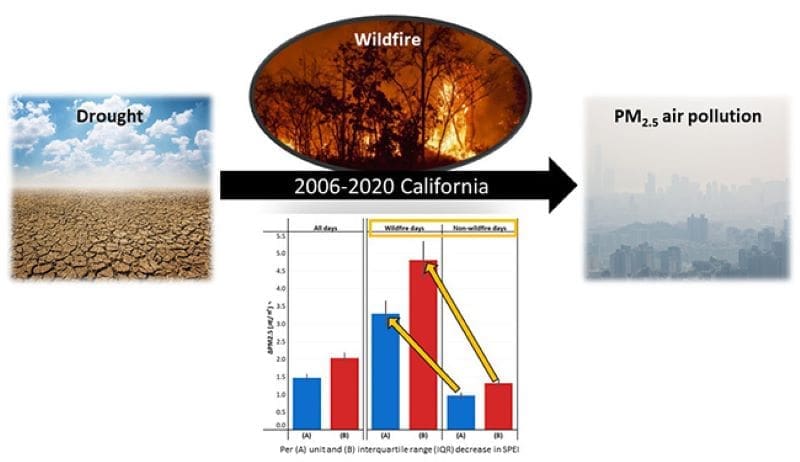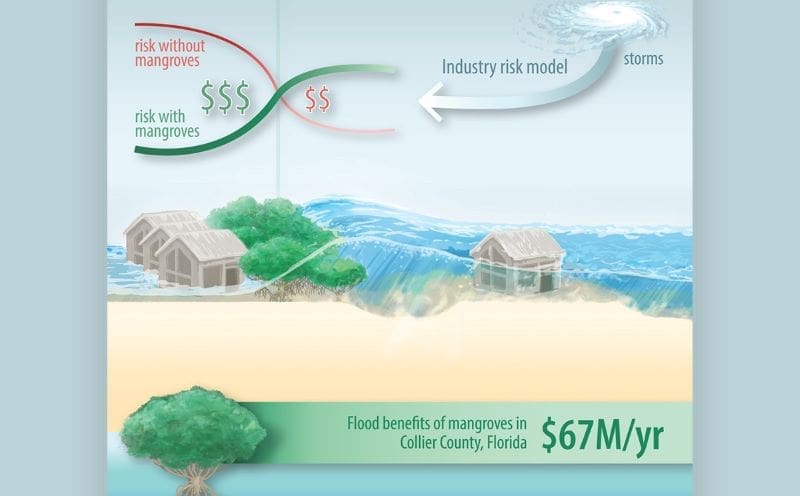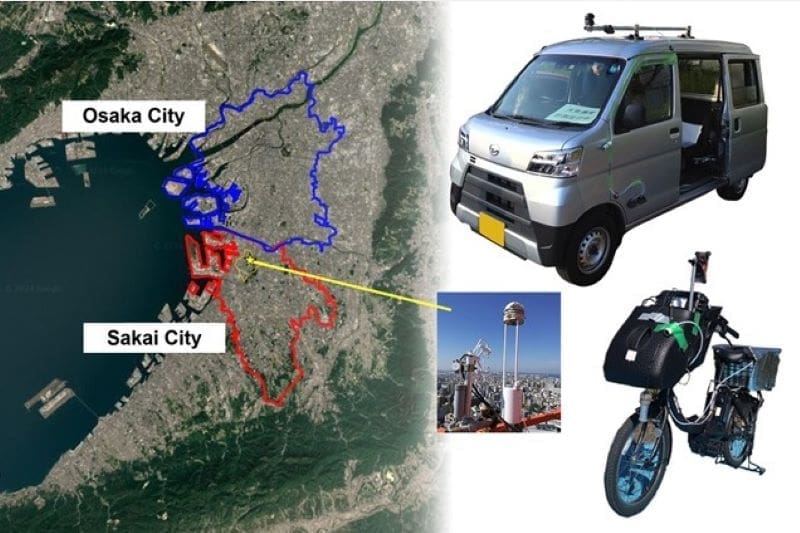Explore the latest insights from top science journals in the Muser Press daily roundup (October 15, 2025), featuring impactful research on climate change challenges.
In brief:
Unveiling the impact of compound drought and wildfire events on PM₂·₅ air pollution in the era of climate change
POSTECH (Pohang University of Science and Technology) Professor Hyung Joo Lee’s research team, including integrated program students Min Young Shin and Na Rae Kim, has published the results of a study analyzing how the combined effects of droughts and wildfires influence fine particulate matter (PM₂·₅) in California, U.S., using 15 years of data.
The study was published in the international environmental science journal Environment International.
PM₂·₅ refers to fine particles with an aerodynamic diameter of 2.5 micrometers (µm) or less. Because these particles can penetrate deep into the lungs when inhaled, causing respiratory and cardiovascular diseases and even premature death, they are strictly regulated worldwide.
The research team focused on California because of its unique climate, characterized by frequent droughts and large-scale wildfires. Until now, however, few long-term, large-scale studies had investigated the combined effects of droughts and wildfires on air quality in this region.

Using air monitoring data and computer modeling from 2006 to 2020, the researchers showed that as drought severity increased (for each one-unit decrease in the Standardized Precipitation Evapotranspiration Index, SPEI), average PM₂·₅ concentrations rose by 1.5 µg/m³. More severe droughts also substantially raised wildfire risk, with each one-unit decrease in SPEI leading to approximately a 90% higher probability of wildfire occurrence. Under extreme drought conditions combined with wildfires, PM₂·₅ concentrations increased to an average of 9.5 µg/m³ compared to normal conditions.
The separate analysis of wildfire impacts was particularly striking: most of the PM2.5 increase associated with drought was actually due to wildfires. In cases where no wildfire occurred, even severe drought did not lead to notable changes in PM₂·₅ levels.
This study serves as a critical warning in the era of climate change. As climate change is expected to intensify the frequency and severity of droughts and wildfires worldwide – including in South Korea – protecting clean air will require not only the control of anthropogenic emissions but also comprehensive strategies that include wildfire prevention and management.
Professor Hyung Joo Lee stated: “This study quantitatively demonstrated the complex relationship between droughts, wildfires, and PM₂·₅ air pollution using long-term data. Since South Korea also experiences periodic droughts and has seen an increase in large-scale wildfires, the implications are highly significant.” He added: “Going forward, wildfire prevention and management will play a crucial role in improving air quality and protecting public health.”
Journal Reference:
Hyung Joo Lee, Min Young Shin, Na Rae Kim, ‘Droughts and PM₂·₅ air pollution in California: the roles of wildfires’, Environment International 202, 109678 (2025). DOI: 10.1016/j.envint.2025.109678
Article Source:
Press Release/Material by Pohang University of Science & Technology (POSTECH)
New study values the benefits of mangroves for reducing property damages in recent hurricanes
A new study led by the UC Santa Cruz Center for Coastal Climate Resilience (CCCR) and East Carolina University (ECU) has found that mangroves significantly reduced storm surges and property damages during Hurricanes Irma in 2017 and Ian in 2022. In collaboration with the catastrophe risk modeling firm Moody’s RMS, the team used industry models to price the mangrove benefits during these hurricanes at $725 million and $4.1 billion, respectively.
The study, published in the journal Cell Reports Sustainability, also assessed the expected benefits of mangroves for storm surge protection at $67 million annually in southwestern Florida’s Collier County. These natural flood defenses are especially important economically in Florida, with its extensive coastline, expensive coastal properties, extreme events, and some exceptional stands of mangrove forests still remaining.
Overall, the study found that mangroves reduce flood losses for coastal homes built inland of the trees. But in some locations, especially for properties in front of mangroves, the team found that properties actually face higher damages due to mangroves.

With their unique aerial root systems, mangroves thrive in marine environments because they can filter saltwater into freshwater. In Florida, an estimated 600,000 acres of mangrove forests contribute to the overall health of the state’s southern coastal zone and beyond, according to the state’s environmental protection department.
The study – a collaboration between CCCR, ECU, Moody’s RMS, and The Nature Conservancy – is the first to value the benefit of mangroves using catastrophe risk industry models.
“In this collaboration with the risk-modeling industry, we show the value of mangrove forests in reducing property damages from storm surges every year,” said study lead author Siddharth Narayan, a recent CCCR research fellow. “Similar to how salt-marsh wetlands from New York to North Carolina reduced damages during Hurricane Sandy, coastal properties in Florida avoided anywhere between 14 to 30% in surge losses during Hurricanes Ian and Irma due to mangroves acting as natural defenses.”
Now a professor of coastal studies at ECU, Narayan hails from Chennai, a tropical coastal city in South India where he completed his bachelor’s in civil engineering. At UC Santa Cruz and UC Santa Barbara, he focused on coastal adaptation and nature-based solutions.
Nationally, storm surges from tropical cyclones and hurricanes cause billions of dollars in coastal property damages every year. However, natural ecosystems such as mangrove forests can, by their presence on these coastlines, modify storm surges and affect property damages, the study states.
There is growing awareness that mangroves are an important part of storm defenses, and the study aims to increase understanding of when, where and how properties benefit from the effects of mangroves on storm surges.
“Mangroves provide many benefits to communities, and it is particularly important that we used a risk industry model to put a price on their flood protection benefits,” said CCCR Director Michael Beck, the study’s senior author. “Like it or not, we only protect what we value, and this is doubly true if it should influence the cost of insurance.”
Further, Beck noted: “The results of these industry models show the real benefits of conserving Florida’s mangroves for property protection and the real costs of choosing to develop in front of these natural barriers.”
Other co-authors of the study include Christopher Thomas, Kechi Nzerem, and Joss Matthewman at Moody’s RMS, Christine Shephard and Laura Geselbracht from The Nature Conservancy. Funding from the Walton Family Foundation, the Herbert W. Hoover Foundation, AXA Research Fund, and the National Science Foundation supported this work.
Journal Reference:
Narayan, Siddharth et al., ‘The spatially variable effects of mangroves on flood depths and losses from storm surges in Florida’, Cell Reports Sustainability online, 100531 (2025). DOI: 10.1016/j.crsus.2025.100531. Also available on ScienceDirect.
Article Source:
Press Release/Material by Mike Peña | University of California – Santa Cruz (UC Santa Cruz)
Methane from overlooked sources higher than predicted in Osaka
Methane is a greenhouse gas that is more than 25 times as potent as CO₂ in warming the Earth. Reducing methane emissions is necessary to reduce the impact of global warming. In urban areas, evidence suggests that natural gas use and sewage treatment are responsible for generating methane. However, the extent of the contribution of other sources is unclear, especially in Japan.
A research group led by Associate Professor Masahito Ueyama at Osaka Metropolitan University’s Graduate School of Agriculture measured methane and ethane concentrations in Osaka by examining the eddies that transport the gas into the atmosphere as well as ‘mobile measurements’ consisting of bicycles and automobiles equipped with gas-measuring analyzers.
The study, published in Atmospheric Chemistry and Physics, focused on the urban areas of Osaka City and Sakai City.

By simultaneously measuring methane and ethane, the researchers were able to use gas ratios to distinguish between methane originating from fossil fuels, such as natural gas; methane originating from biological sources such as the microorganisms involved in sewage treatment; and combustion.
The group found a discrepancy between observed methane emissions and official estimates. Several areas of elevated methane concentrations were observed, which did not match methane emission inventories reported by local governments.
Researchers found that city gas was a major source, showing up at many sites in the study. There were also other often overlooked contributors ranging from industrial plants and restaurants to biological sources like sewage, reservoirs, dairy farms, and compost piles. Some specifically Japanese sources also stood out including the water-filled ditches around ancient kofun burial mounds and even the process of making the fermented foods commonly eaten in Japan.
“This research is expected to lead to concrete measures for reducing emissions from sources that have been overlooked until now,” Professor Ueyama said. “Going forward, we will increase reliability by repeating measurements and expand the system to multiple cities. We aim to establish evaluation methods and deepen our understanding of methane emissions in Japan’s major cities.”
Journal Reference:
Ueyama, M., Umezawa, T., Terao, Y., Lunt, M., and France, J. L., ‘Evaluating urban methane emissions and their attributes in a megacity, Osaka, Japan, via mobile and eddy covariance measurements’, Atmospheric Chemistry and Physics 25 (19) 12513–12534 (2025). DOI: 10.5194/acp-25-12513-2025
Article Source:
Press Release/Material by Osaka Metropolitan University (OMU)
Featured image credit: Gerd Altmann | Pixabay




